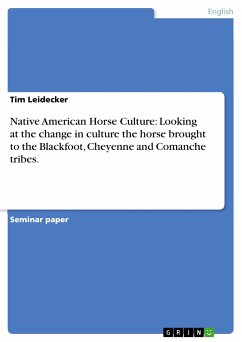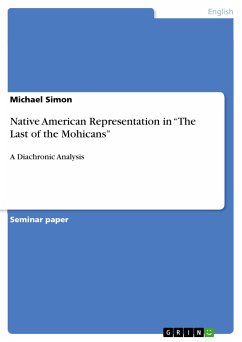Seminar paper from the year 2003 in the subject American Studies - Culture and Applied Geography, grade: 2,0 (B), University of Potsdam (Anglistics and American Studies), course: "Voices From The Gap": Contemporary Native American Fiction, language: English, abstract: There are about as many legends, myths and clichés in Native American culture as there are tribes on the North American continent. All “redskins” are either “noble savages” or “brutal animals” and they are all living in teepees. In war times the “war hatchet” gets dugged out and with “war painting” on their face and bow and arrows in their hands the enemy is pursued and attacked. When captured, the unfortunate foes end up on the stake, get their feet sprinkled with salt and have it licked off by goats and other domesticated animals. The list goes on and on. One very persistent misconception is that each and every Indian has his faithful and reliable horse. It strayed to him from the nearly infinite vastness of the prairie and ever since he rides it through thick and thin, eventually even being able to do all kinds of flashy and fancy stuff like riding backwards, hanging down on one side to dodge opposing arrows and bullets or even riding at full speed while standing on the horses back. While it is true that experienced riders have learned those kind of tricks after years of strenous training, the cliché of Indian and horse belonging together like fist and glove is plain wrong. The truth is that for thousands of years Indian tribes had to manage without horses as they had died out a long time ago according to prehistoric findings. As the living conditions are quite diverse in the United States in general and even the Great Plains, the area I am going to look at closer in particular, it is only normal that without a horse as mean of transportation, war and, yes, even source for food, the different tribes had to use different strategies and ways to fight their way through life. Some have been hunters, some simply took what nature offered them and the next even errected their own fields and grew fruits and vegetables on them. The bottom line is: Hunting for buffalo in great numbers, raiding other tribes or attacking white settlers has only been the Indian way of life for less than 200 years and additionally, there have been great differences between the tribes. In my paper I have chosen the Blackfoot, the Cheyenne and the Comanches as examples for tribes who have followed different paths once they acquired the services of the horse.









